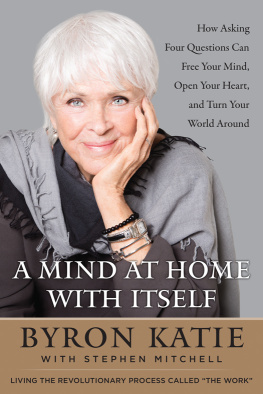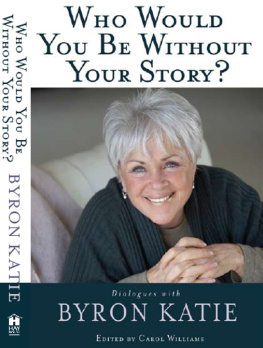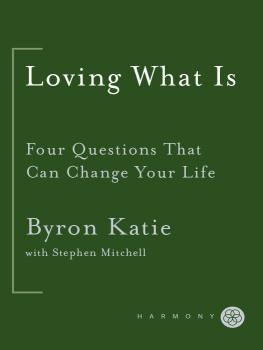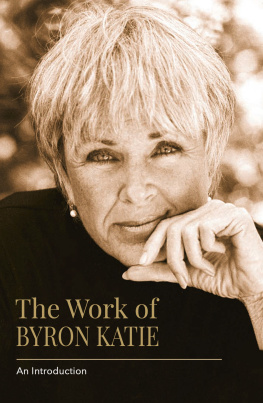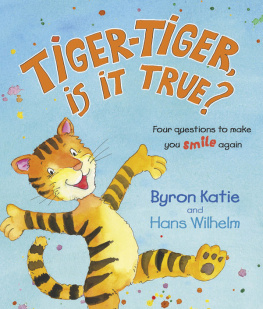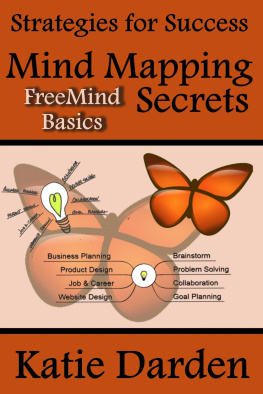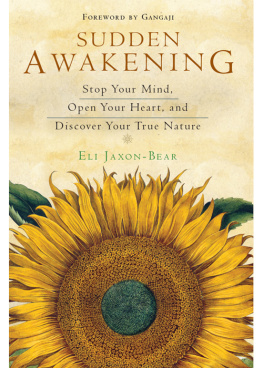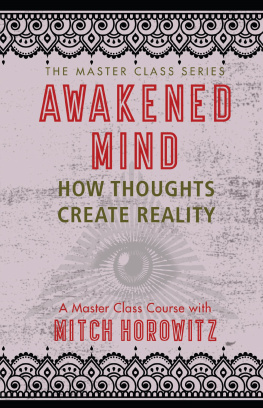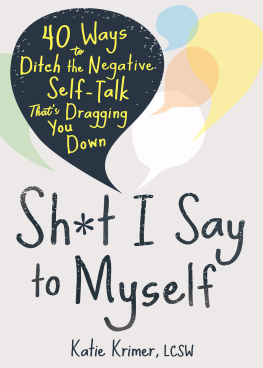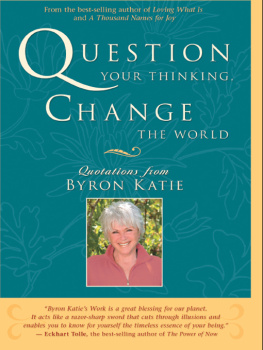A Mind at Home with Itself is a book about generosity. How can we be generous not just occasionally but all the time, every day of our lives? It sounds like an unattainable ideal, but what if its not? What if generosity can become as natural as breathing? This book shows you how. All it takes is an open mind, a mind willing to question any stressful thought that arises within it. When we understand who we really are, behind all our confused thinking, we discover the constant, effortless generosity that is our birthright.
Byron Katie Mitchell (everyone calls her Katie) speaks from the depths of realization. Her method of self-inquiry, which she calls The Work, is a kind of enhanced mindfulness. As we do The Work, not only do we remain alert to our stressful thoughtsthe ones that cause all the anger, sadness, and frustration in the worldbut we question them, and through that questioning the thoughts lose their power over us.
Great spiritual texts, Katie says, describe the whatwhat it means to be free. The Work is the how. It tells you exactly how to identify and question any thought that would keep you from that freedom. It gives you a direct entrance into the awakened mind. A Mind at Home with Itself will let you see the world through the eyes of someone who has woken up to reality, the radiant moment, the state of grace in which there is no separation and the heart overflows with love.
For readers who havent heard about Byron Katie, here is some background. In the midst of an ordinary American lifetwo marriages, three children, a successful careerKatie entered a ten-year-long downward spiral into depression, agoraphobia, self-loathing, and suicidal despair. She drank to excess, her husband brought her pints of ice cream and codeine pills that she ate like candy, and she ended up weighing over two hundred pounds. She slept with a .357 Magnum revolver under her bed. Every day she prayed not to wake up the next morning, and it was only because of her concern for her children that she didnt kill herself. For the last two years of this ordeal she could seldom manage to leave her house; she stayed in her bedroom for days at a time, unable even to shower or brush her teeth. (Whats the use? she thought. It all adds up to nothing anyway.) Finally, in February 1986, at the age of forty-three, she checked herself into a halfway house for women with eating disordersthe only facility that her insurance company would pay for. The residents were so frightened of her that they put her in an attic bedroom and booby-trapped the staircase at night; they thought she might come down and do something terrible to them.
One morning, after about a week at the halfway house, Katie had a life-changing experience. As she lay on the floor (she didnt feel worthy enough to sleep in a bed), a cockroach crawled across her ankle and down her foot. She opened her eyes, and all her depression and fear, all the thoughts that had been tormenting her, were gone. While I was lying on the floor, she says, I understood that when I was asleep, prior to cockroach or foot, prior to any thoughts, prior to any world, there wasthere isnothing. In that instant, the four questions of The Work were born. She felt intoxicated with joy. The joy persisted for hours, then days, then months and years.
When she went home, her children, who had lived in fear of her outbursts, could barely recognize her. Her eyes had changed. The blue had become so clear, so beautiful, her daughter, Roxann, says. If you looked in, you could see that she was as innocent as a baby. She was happy all day long, every day, and she seemed to be brimming over with love. She spent most of the time silent, sitting for hours on the window seat or out in the desert. Her younger son, Ross, says, Before the change, I couldnt look into her eyes; after it, I couldnt stop looking into them.
It took Katie years to learn how to speak about her state of being. She had no external context for her awareness; she had never read spiritual books or heard about spiritual practices. She just had her own experience to guide her, and all she needed was the inquiry that was alive in her.
Katies rebirth was more radical than the kind of conversion experience that William James documents in The Varieties of Religious Experienceso radical, in fact, that she had to relearn (or, from her perspective, learn) everything about being human: how to function in time and space, how to break reality apart into nouns and verbs so that she could communicate with people, how to pretend that past and future were real. And its effect was directly opposite from the usual conversion experience in that it didnt result in the acceptance of a religious belief. Her clarity didnt and couldnt permit a single belief. It burned through religious concepts along with all other thoughts. After her awakening, she continued to feelto bethe uninterrupted presence of the love she had awoken as. I felt that if my joy were told, she says, it would blow the roof off the halfway houseoff the whole planet. I still feel that way.
During that first year, in the midst of her great joy, beliefs and concepts continued to arise in her mind. The way she dealt with them was through inquiry. She would often go out alone into the desert, which began just a few blocks away from her house in Barstow, California, to inquire into these thoughts.
Whenever a belief appeared in my mindthe big one was My mother doesnt love meit exploded in the body like an atom bomb. I noticed shaking, contraction, and the apparent annihilation of peace. The belief might also be accompanied by tears and a stiffening of the body. It might have appeared to an onlooker that I was affected from the toes to the top of the head with upset and sadness. But in fact I always continued to experience the same clarity, peace, and joy that had arisen when I woke up on the floor in the halfway house, with no I left, no world, and laughter just pouring out of my mouth. The belief that had arisen would always fall away and dissolve into the light of truth. What shook the body was the remnant of the belief, which appeared as an uncomfortable feeling. From this discomfort I automatically knew that the story wasnt true. Nothing was true. The awareness of this was experienced as glorious humorglorious, rapturous joy.
Inquiry continued for a year or so, until all the beliefs and concepts were burned up. The method was tested in the laboratory of her experience, with a more stringent standard of sanity than even the most meticulous scientist of the mind could devise. Any thought or mental event that had the tendency to pull her off balance, anything that caused a reaction in her that was a diminishment of her peace and joy, was subjected to rigorous inquiry, until the thought was met with understanding. I am someone who only wants what is, Katie says. To meet as a friend each concept that arose turned out to be my freedom. Thats where The Work begins and endsin me. The Work reveals that you can love it all, exactly as it is. And it shows you exactly how. By the end of this process, during the second year after her awakening, only the clarity remained.
Soon after Katies return from the halfway house, word spread in Barstow about a lit lady, and some people found themselves magnetically attracted to her and her freedom. As more and more people came to see her, she became convinced that what they needed, if anything, was not her personal presence, but a way to discover for themselves what she had realized. The Work is an embodiment of the wordless questioning that had woken up in her. She had lived and tested it. Now she formulated it, as if in slow motion, for other people to use. Over the past thirty-one years it has helped millions of people around the world begin to free themselves from stress, frustration, anger, and sadness.

